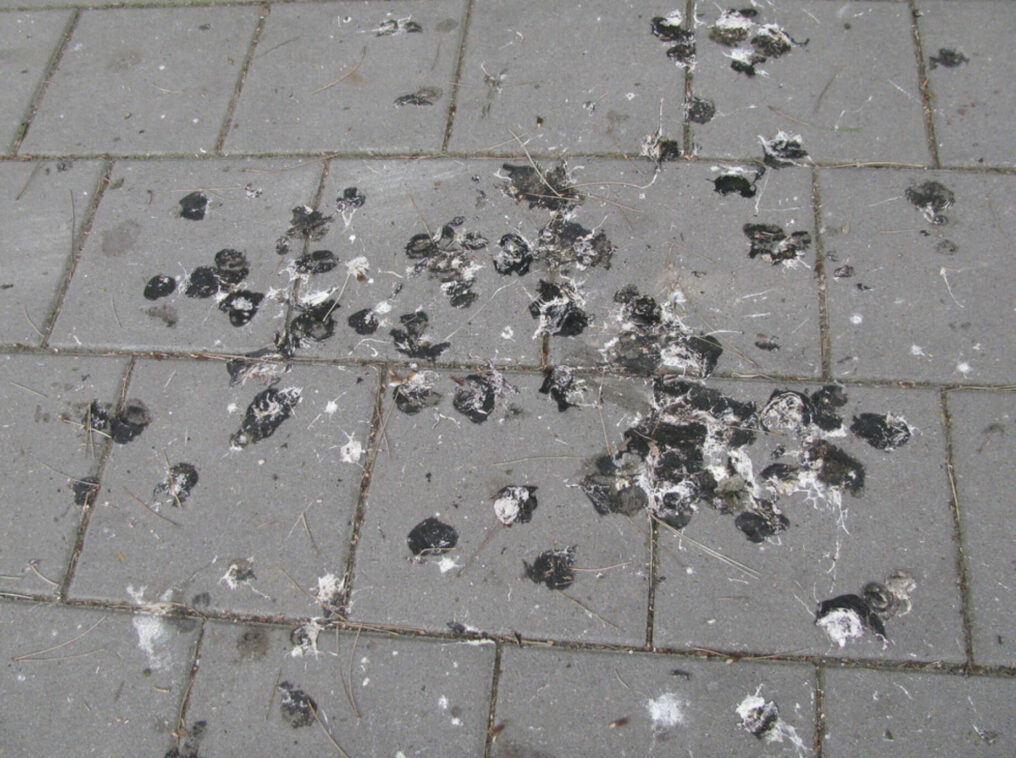Pigeon droppings can pose serious health concerns for both humans and pets. In this article, we will explore the potential health risks associated with pigeon droppings and why it’s crucial to address this issue promptly
Table of Contents
Did you know that over 60 diseases can be transmitted by it? You’ve probably strolled past these urban residents without a second thought. But it’s time you become aware of the potential health risks they’re dropping on your path. We’ll guide you through the hazards, how you’re exposed, and just how serious it could be. Don’t underestimate the power of pigeon poo; it’s more dangerous than you’d think.
Key Takeaways
- It contains a yeast-like fungus called Cryptococcus that can cause pigeon poop disease when inhaled.
- Direct contact with it can lead to skin irritation, and accidental ingestion can result in gastrointestinal issues.
- Geographical location and weakened immune systems increase the risk of contracting diseases from it.
- Precautions such as using masks and gloves, as well as thorough handwashing, are crucial in mitigating the health risks associated with it.
What is it?
You’re probably wondering, what exactly is this threat we’re talking about? It’s a yeast-like fungus known as Cryptococcus. This fungus lives in the environment, particularly in soil contaminated by pigeon droppings. The health risk associated with it isn’t widely known. The droppings can cause a condition known as pigeon poop disease, which is essentially an infection caused by Cryptococcus. You’re at risk of contracting this pigeon-dropping infection when you inhale the fungus that’s been disturbed from an infected area. It’s not just about the unsightly mess, it’s a real health hazard. Understanding the nature of this threat is the first step towards mitigating the risk associated with it.
How can you catch it?

By coming into contact with pigeon droppings, you’re exposing yourself to the risk of inhaling the Cryptococcus fungus, which can lead to infection. This, often termed as pigeon poop disease, can show symptoms like cough, fever, and fatigue. A pigeon droppings risk assessment, therefore, becomes crucial in places with a high density of these birds.
Here’s a table that outlines how you can become infected, the symptoms, and precautionary measures:
| Exposure | Symptoms | Precautions |
|---|---|---|
| Inhalation of fungus from droppings | Cough, fever, fatigue | Use masks while cleaning pigeon droppings |
| Direct contact with droppings | Skin irritation | Use gloves for cleaning |
| Accidental ingestion | Gastrointestinal issues | Maintain cleanliness, avoid open food |
How risky is it?
Despite the potential dangers, it’s important to understand that in most situations, you’re not at an extremely high risk for contracting diseases from pigeon droppings. However, in cases with weakened immune systems or prolonged exposure, the risk significantly increases.
Consider these factors:
- Geographical Location: The disease from pigeon droppings, particularly cryptococcosis is more common in tropical regions.
- Immune Status: Those with compromised immune systems are at a heightened risk.
- Exposure Level: Is cleaning bird poop dangerous? Yes, especially if the exposure is prolonged or frequent.
How dangerous is pigeon poo?
While it’s true that pigeon droppings aren’t typically a cause for alarm for most people, for individuals with weakened immune systems or those in areas with high exposure, the risk can be significantly greater. So, is pigeon poop toxic? Yes, indeed it can be, especially for those with compromised health. Diseases like psittacosis and salmonella, which can cause flu-like symptoms and diarrhoea respectively, can be transmitted through contaminated droppings. In the UK, pigeon diseases are a cause for concern due to their potential impact on public health. If you’re tasked with cleaning pigeon droppings, disease transmission is a valid worry. Hence, it’s crucial to take precautions, such as thoroughly washing your hands post-cleanup.
Frequently Asked Questions
What Are the Potential Long-Term Effects of Exposure to Pigeon Droppings?
Long-term exposure to pigeon droppings can put you at risk for serious diseases like histoplasmosis, cryptococcosis, and psittacosis. You’ll experience flu-like symptoms, which, if untreated, could lead to complications, such as lung damage.
Can the Bacteria or Viruses in Pigeon Droppings Become Airborne?
Yes, the bacteria or viruses in pigeon droppings can become airborne. When it dries, you can inhale the dust, potentially leading to diseases like histoplasmosis, cryptococcosis, or psittacosis. It’s imperative to avoid direct exposure.
Are There Specific Regions or Environments Where the Risk of Exposure to Pigeon Droppings Is Higher?
Yes, you’re at a higher risk in urban areas. Around 80% of pigeons dwell in cities, making exposure to their droppings more likely. This particularly affects places with large pigeon populations like parks or public squares.
How Can One Effectively Clean Areas Contaminated With Pigeon Droppings?
To effectively clean areas contaminated with pigeon droppings, you’ll need to wear protective gear, wet the droppings with a disinfectant to reduce dust, and then scrub and dispose of the waste safely.
Are There Any Preventative Measures or Vaccinations Available Against Diseases Caused by Pigeon Droppings?
Stepping into the fray of prevention, there aren’t specific vaccines for diseases from pigeon droppings. However, you can maintain good hygiene, wear protective gear when cleaning, and control the pigeon population in your area.
You may also enjoy reading this article
Was This Article Helpful?
- Please provide feedback and comments to help us improve our content.
- Share your experiences and any additional tips you have for dealing with pests.
Share this Post


